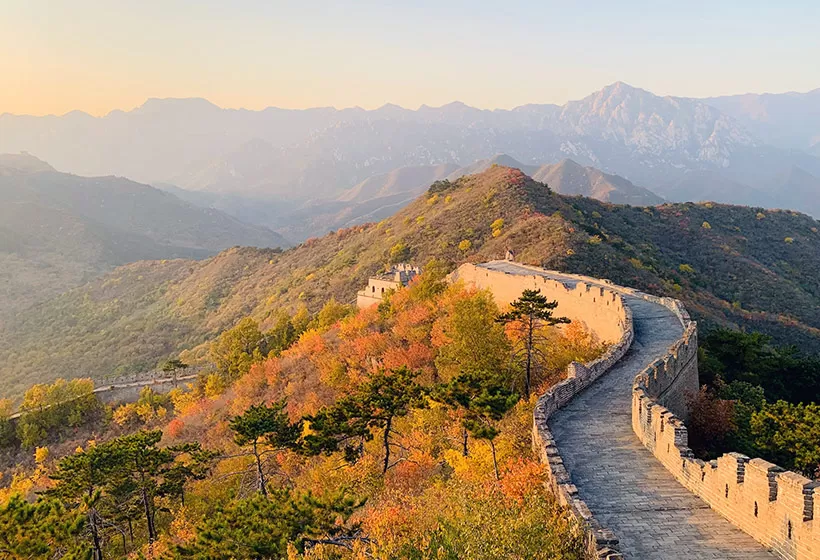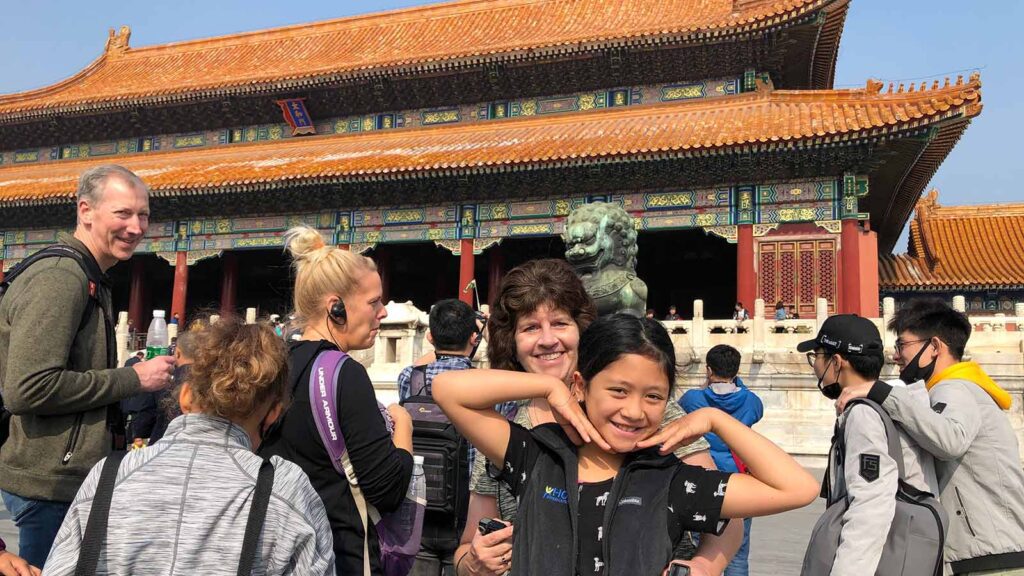20 Free Suggestions For Picking China Tour Websites
Wiki Article
Top 10 Tips For Local Foods And Specialties To Shop In China
1. Find out before you make a decision - Find out what each region is famous for. Suzhou is famous for its silk, Jingdezhen is famous for its porcelain, as well as Tibet is home to thangkas.
Pro: This program helps you concentrate on the shopping goal and minimizes the amount of time wasted.
Con: Needs preparation and familiarity with regional highlights.
2. Buy Local to Guarantee the authenticity of your purchase
TIP: Buy products directly from their place of origin to guarantee authenticity and quality.
Pro: Lowers the risk of copyright goods and helps local artisans.
Cons: Visiting less touristy or rural areas is possible.
3. Take a look at the workshops or artists.
TIP: Try small workshops or artisan hubs instead of the typical shops.
Pro: Gives you a more understanding of craft and guarantees that you're buying directly from creators.
Con: The cost of hand-crafted products is higher and it can be difficult to bargain.
4. The Cultural Significance of Language
Tip: Learn the cultural background of items such as jade carvings, cloisonne or calligraphy scrolls.
Pros: You will be able to enjoy your purchases more and give them an even deeper significance.
Con: It might take a while to fully understand cultural nuances.
5. Check quality carefully
To ensure that you are satisfied with the quality of the product, make sure that items like tea, ceramics or even embroidery meet your standards.
Pro: It'll protect you from disappointment since you'll get exactly what pay.
Cons: A certain amount of expertise is required to identify high-quality goods.
6. Beware of products that are mass-produced
Select unique, hand-crafted items instead of mass-produced copies.
Pro: Ensures you take home a truly special and valuable souvenir.
Con True craftsmanship is likely to be more expensive and harder-to-find.
7. Compare Prices
Tip: Comparing prices of the same product at multiple stores and stalls is an excellent idea.
You can determine acceptable price points to avoid being charged excessively.
Cons: Can be time-consuming, particularly in large markets.
8. Buy Tea From Trusted Vendors
Go to reputable tea stores in areas like Hangzhou or Fujian to locate Longjing (Dragon Well ) or Tieguanyin) teas.
Pro: Ensures top quality and authenticity.
Cons: It may be difficult for newcomers to determine the quality of tea.
9. Local Customs Understanding them
In certain areas, you may find that sellers will expect to bargain.
Pro: Shopping in a multicultural setting is fun.
Uncertainty about customs can lead to awkward situations.
10. Pack Carefully
Tip: Plan for how you'll transport fragile or bulky regional specialties such as silk or ceramics to your home.
Pro: Prevents damages and ensures your purchases are delivered in a safe manner.
Cons: Could create logistical challenges and add costs to shipping.
Advantages of Shopping for Regional Specialties
Unique souvenirs.
Cultural Immersion. By purchasing local foods it is possible to be a part of the local culture and the craftsmanship.
Direct purchases from artists aid local economies.
Cons of Shopping Regional Specialties
Genuineity Risks: Risk of buying imitations or lower-quality versions.
Logistics Challenges: Moving fragile or heavy items can be difficult.
Locally-sourced products are typically expensive, especially handcrafted products.
You can get the most of your shopping trip in China by following these simple tips. Read the top learn more about visiting here for more tips including chinese kites a phoenix shaped kite, eating in dunhuang, binhai aircraft copyright theme park in tianjin, the song of everlasting sorrow the famous long narrative poem, splendid china tour.html, xishuangbanna, shopping in nanjing, blue dragon temple, chinese furniture the development history of chinese furniture, xi an travel tips and more.

Top 10 Tips To Visit Famous Temples During The Seasonal Visits In China
1. Visit in the off season Tips for Autumn/Winter plan to visit renowned temples during the off season (autumn/winter), which typically falls between November and February, think about visiting them. This is when fewer people are around and the temperatures are lower.
Pro: A less busy. Offers a peaceful and tranquil space.
Cons: It can be more cold and uncomfortable to visit temples outside.
2. Be Prepared for Weather Extremes
Tip - Temperatures can change dramatically in different seasons. Summer is often humid and hot, while winters are often cold and frigid. Be sure to check the weather forecast and take the appropriate precautions.
Pro: Your visit is going to be enjoyable and relaxing since you'll be well-prepared for any weather.
Packing for extreme seasons can be difficult, particularly if you are travelling with a light.
3. Visits in the spring and Summer to enjoy Vibrant Flora
Tips: If you visit temples during the summer and spring You can take in beautiful gardens with blooming flowers and lush landscapes.
Pro: Gorgeous scenery adds to the aesthetic experience of visiting the temple grounds.
Con: Summers are usually extremely hot and packed, especially around national holidays.
4. Think about festivals and other special events.
Tips: Plan your visit around traditional festivals, such as the Chinese New Year in January/February or the Mid-Autumn Festival in September. These festivals provide a range of ceremonies and rituals as well as an opportunity to take in the rich culture of the temple.
Pro The temples are typically bustling and filled with traditional activities, giving visitors the most unique experience.
Con: During the festival season temples may become very packed and the cost of accommodation can increase.
5. Beware of Peak Holiday Seasons
Tip Beware of visiting temples during tourist peak season, such as Chinese New Year and Golden Week (October), as they are likely to be crowded by both local and foreign visitors.
Pro: Enjoy a peaceful vacation without the crowds.
Con: You may miss some of the festival special events if you're at the peak of the event.
6. Check Temple Closures during Winter
It is important to find out whether the temples you intend on visiting are open or closed in winter. This is especially important for those located in remoter areas or in remote regions. Be sure to check before you go.
Pro: Avoids unnecessary trips and ensures you can organize other activities ahead of time.
Con: Temples that are completely closed or have reduced hours might disappoint.
7. Early Morning Tours to Summer
Start your journey early in the morning when you plan to visit in summer, to avoid the intense heat of midday. Many temples open their doors at dawn. The air is quieter and there are fewer visitors.
A cooler and quieter experience, without the crowds.
Cons: Early wake-up is required, which might not be appropriate for all people.
8. Be prepared for rain in the Summer.
Tipp Note: Rainy days are commonplace in the summer months, particularly in southern China. Take an umbrella and rain gear if you are traveling during this time.
Pros: You will be able to enjoy the beauty of temples even in the event of rain.
Cons: The rain can cause outdoor activities to be difficult and cause temple grounds become slippery.
9. Explore the Mountain Temples during the Autumn season.
TIP: Visit temples located in mountainous regions such as Mount Wutai (or Mount Emei) in the autumn. The temperature is cool and the autumn leaves make an incredible scene.
Pros: The cooler temperatures make hiking and outdoor exploration more comfortable, and the breathtaking views.
Con: Popular mountains temples still draw crowds especially during weekends or holidays.
10. Use the Lunar Calendar to Plan Specific Events
TIP: Many temples, specifically in China are based on the lunar Calendar. This means that certain ceremonies and events have a lunar date. Look up the calendar to find important temple events such as Buddha's Birth, the Lantern Festival and other ceremonies.
Pro: Unique cultural experiences and deeper insights into the local practices of spirituality.
Cons: Planning and researching your trip around the lunar schedule might take more time and you might discover that the lunar calendar does not align with your travel dates.
Benefits of going to Chinese temples in the time of the season
Fewer Crowds: Off-season visits offer a more peaceful and contemplative experience.
Cultural Events: Festivals offer an opportunity to learn more about the local cultural and religious traditions.
Beautiful Scenic Beauty: A visit in spring or autumn can offer stunning landscapes and vibrant gardens around temples.
Exploring Tempel is more enjoyable during the winter and autumn months.
Pros and Cons of Visiting Chinese Temples during the season
Unpredictable Weather - Winter can be cold, while summer may be too hot. Both of these conditions can influence your comfort.
Temple Closures: Some temples may have restricted hours or be closed during the off-season or in extreme weather.
Crowded During Festivals Holidays and festivals can bring large crowds, making it harder to fully experience the temple's peaceful atmosphere.
There are limitations: You could not be able to participate in certain events of the season or celebrations if your visit is beyond the timeframe that is appropriate for your visit.
Pick the best time for visiting China's most well-known temples and plan accordingly. This will ensure you will have a memorable trip. Knowing the dynamics of the seasons can help you make the most of your trip. Check out the most popular explore this cultural treasure for blog tips including shopping in nanjing, temple of confucius one of the three largest ancient architectural complexes, four great classical novels.html, guilin travel tips, kweichow moutai the best and most famous liquor in china, taishan, snow beer the best selling beer in the world, shopping in suzhou, zechawa valley tour route, chinese vegetarian food a vegetarians guide in china and more.
